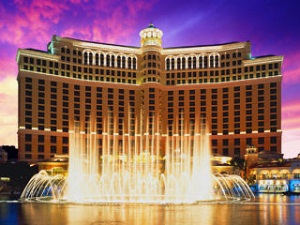The Story of English by Robert McCrum, William Cran, and Robert MacNeil is a readable encyclopedic history of the English language. It is well written and includes as much history of England as it does of English itself. I’m enjoying it. I will spend years reading it, I think.
“Charity is injurious unless it helps the recipient become independent of it” – John D. Rockefeller
The word “salary” comes from “salt,” the oldest preservative and one of the earliest currencies.
Egalitarian (adjective) – Egalitarian (ih-gal-ih-TAIR-ee-un) means asserting, resulting from, or characterized by belief in the equality of all people. As I used it today: “They were shy and I did my best to relax them in that American sort of egalitarian way.”
The Challenge of Charity: My Failure to Help Marcus and Gabriela
First I felt ashamed. Then I was hopeful. Then I was disappointed. Now I’m resigned.
Marcus and Gabriela came to work for us in 1999 after we built a second home in Nicaragua.
Marcus tended the landscaping. Gabriela kept the house. Antonio, my Nicaraguan partner, had recommended them to us. Their parents and siblings had worked for him.
They were very young at the time – in their late teens or early twenties. But they were already burdened with the responsibility of being parents. Gabriela’s husband worked in construction. Marcus’s wife worked part-time cleaning at a local restaurant.
Neither spoke a word of English, so we had to communicate in the very rudimentary Spanish I had at the time. They showed up every morning at 7:30 and worked, not energetically but dutifully, until 3:30. Then they were gone. In those early days, they left without saying goodbye.
They were shy and I did my best to relax them in that American sort of egalitarian way. But Nicaragua, like all countries, lives with its history. And the vestiges of Spanish colonialism still existed. Most upscale households in Nicaragua employ domestic workers, who are, I gathered from observation over the years, treated with respectful condescension.
I asked Antonio what I should pay them. He told me $150 a month.
“A month?”
“That’s the going wage,” Antonio assured me. ”If you pay them much more, it will cause problems in the community – for them now, and for you later on.”
I knew that he was right, but I wasn’t going to accept it…
I sat down with Gabriela and Marcus and told them that if they wanted to earn more money, I could give them jobs that fell outside of their normal duties. Marcus could give a room a new coat of paint. Gabriela could plant flowers along the side of the garden. That sort of thing.
And they could do these extra chores during their regular hours, I told them. (Which would work out just fine for me, because I didn’t really have eight full hours of work a day for them.)
I thought they would be delighted with the opportunity, but they were not. Nestor, a local friend and colleague, explained their lack of enthusiasm.
“They probably think you are trying to take advantage of them by asking them to do extra work,” he explained. “Even for extra money.”
“Huh?”
It was another vestige of the country’s history – in this case, the years it had existed as a Communist state.
But although they were reluctant to do “extra” work, they were not averse to asking for financial “help” with family problems – a sick parent, a leak in the roof, etc. I was more than happy to give them what they needed, but I insisted that they work the “extra” hours for the extra money.
For a few years, it seemed to be working well. They used the extra money they earned to buy themselves bicycles, cell phones, and clothing.
But when I had the opportunity to visit their homes, it was clear that the extra money had bought them all sorts of things that put them in the upper economic ranks of Limon, the hamlet they lived in. Still, like everyone else in the area, they were living in simple mud and wood shacks.
Despite free-market views to the contrary, this huge gap between their homes and mine bothered me. I had to find a way to increase their income yet again so they could at least have proper windows, doors, and floors.
So I came up with a solution that was popular among charity advocates at the time: I’d give them micro-loans to start their own side businesses. My idea was that they would follow the strategy I’ve recommended for years to other would-be entrepreneurs: Start small. Test the product and the pricing and the pitch as quickly and efficiently as possible. And then, if the business starts to take off, expand.
Considering their earlier reluctance to do extra work for pay, they were surprisingly open to the idea of having side businesses, businesses that could be run by an unemployed sibling or relative while they were at their regular jobs.
I told them, stupidly in retrospect, to choose the businesses they wanted to have. (I thought that this would provide them with the extra motivation they might need to succeed.)
Gabriela decided on a children’s clothing store. Marcus decided to open up a pulperia, a rustic version of a mini 7-Eleven, in front of his house.
Two very bad ideas! READ MORE
Watch This: This Swedish performer adds an extra dimension to magic.
Who’s the Richest Author in the World?
If your number one goal in life is getting rich, becoming an author is not a great choice of occupation. The average writer in the USA, according to ZipRecruiter, is $39,179.
To put that in perspective, it’s about $5,000 more than the average income of a garbage collector, but about $12,000 less than the average plumber.
But there are exceptions. And, as my brother-in-law George reminds me every time he visits, it’s always the exception that is interesting.
George likes to start his day with a cup of coffee and the morning paper. He has a curious mind, and he likes to share bits of trivia that he picks up from whatever it is that he’s reading at the moment. So when he’s visiting and we are at the breakfast table, it’s not unusual for him to ask a question that might otherwise seem to have come from the blue.
Today, it was this one: “Who is the author who is worth more than a billion dollars even after giving away $170 million in 2012?”
Now before you throw out the obvious answer, tell me this:
Do you know who Paulo Coelho is?
He’s a Brazilian novelist, musician, and theater director. His first book, published in 1982, had only modest success. But then he took a trip around Spain and chronicled it in The Pilgrimage. And he followed that up with The Alchemist, which was not only a huge international bestseller but the most translated book by a living author. With a net worth topping $500 million, Coelho is near the top of the world’s richest authors.
What about Barbara Taylor Bradford? Do you know who she is?
I’m not familiar with anything she’s written, but I understand that A Woman of Substance, her debut novel (at the age of 46) has sold 35 million copies since it was published in 1979. In addition to 28 additional novels (all bestsellers), Bradford has authored a series of children’s books and a series of interior design books. She’s worth about $300 million.
Or how about Jeffrey Archer?
This English author (and politician) has sold more than 250 million copies of his books internationally. Part of his fame, I have read, came from the fact that he spent 5 years in prison on some charge of “perjury and perverting the court of justice,” which he monetized by writing a series of diaries about the experience. Archer has a net worth of $200 million.
Now – unless you are a student of African literature – I’m almost positive you’ve never heard of David Oyedepo.
A Nigerian author of inspirational books, Oyedepo is his country’s richest cleric. He’s written more than 50 books of his own, and also owns Dominion Publishing House, which publishes faith-based works by other writers. Oyedepo’s net worth is estimated to be about $150 million.
Coelho, Bradford, Archer, and Oyedepo – these super-rich but little known (to the likes of you and me) writers are high up on the net worth totem pole. But most of the spaces at the top are filled by names we know very well:
You know John Grisham…
He has a net worth of $300 million, and he earns an average of $50 million a year – in part because his books are tailor-made to be produced as movies. I’d expect to see him steadily moving up the net-worth list.
And Danielle Steel…
Steel has, without a doubt, the most colorful marital history of her peers. Following a divorce from her wealthy first husband, she had a short marriage to a man who was later convicted of rape, followed by an equally short marriage to a drug addict. And that wasn’t the end of it. She’s been married and divorced at least two more times. Meanwhile, she has written more than 70 bestselling novels… and has a net worth of $385 million.
And Stephen King…
A specialist in the literary genres of horror, fantasy, and suspense, King has written beautifully and successfully for films, too. (He has also written a great book on writing called On Writing.)He has sold more than 350 million copies of his novels around the globe, and has a net worth of more than $400 million.
And James Patterson (who is almost – but not quite – our winner)…
Patterson has sold more than 300 million copies of his books. Most notable is his series featuring Alex Cross, a fictional psychologist and crime solver. He is also known for his campaign to make reading a national priority, and for his support of colleges and universities, school libraries, and independent bookstores. (He has donated millions in grants and scholarships.) Patterson has a net worth of $750 million, and continues to earn about $90 million per year.
So who is the richest author in the world? JK Rowling, of course!
Was Rowling your guess? She was mine. How could she not be?
She is the author of the Harry Potter industry, which began with books and then went on to include movies, games, merchandise, endorsements, and even a 2-part Broadway play. With a net worth of more than $1 billion – even after giving away $170 million of it in 2012 – Rowling currently holds the title. READ MORE
Principles of Wealth #25*
“Hard money” advocates and precious metals dealers contend that gold is not only the safest way to store wealth but also a very good way to grow wealth. The truth is, gold is a valid way to protect wealth from certain unlikely economic situations – but for the ordinary wealth builder, owning lots of gold is both risky and unwise.
There is a school of economic theory that puts gold above all other asset classes.
Here’s the argument:
* Stocks can go up but they can also go down. The same can be said for real estate, commodities, and bonds. But over the long haul, gold will preserve an investor’s wealth because of its intrinsic value.
* President Nixon made a huge mistake in 1971 when he took the dollar off the gold standard. When the dollar was tied to US gold reserves, the government could not print more dollars than there was gold to back them up. Now, the government had the freedom to print as many dollars as it wanted, backing them up with Treasury bonds (promises to repay the debt sometime in the future).
* When nothing can stop the printing of dollars, politicians will print them in an effort to speed up economic growth. But as the number of US dollars in circulation increases, the value of the individual dollar goes down. This causes inflation spikes that make virtually every asset other than gold – stocks, real estate, commodities, and bonds – worth less.
* In 1970, before Nixon’s decree, an ounce of gold could be bought for about $35. In 2019, that same ounce of gold would cost about $1,290. Meanwhile, as US debt has skyrocketed, the risk of a massive economic collapse has become more and more likely. Any day now, we could see banks freezing assets, the stock market crashing, bondholders losing everything, and “blood in the streets.” Gold will then be the only currency that anyone will accept. And here’s the silver (gold) lining: When that happens, the value of an ounce of gold will soar to $5,000 and even $10,000. Investors that own gold will become the new rich.
So… is that likely? That’s the million-dollar question. READ MORE
What You Can Learn About Investing From a Las Vegas Casino
The last time I was in Las Vegas for more than a business meeting was when my children, now grown and with children of their own, were in high school. We spent a week there, marveling at the mega-hotels, getting lost in the cavernous casinos, riding the rollicking rides, shopping in the scenic super-malls – generally swept away by the sounds and scintillations of that surreal, synthetic city.
Las Vegas offers a special kind of fun. It won’t give you the expansive fun of trekking the desert or the aesthetic enjoyment of walking through Rome. It’s more like a B movie or a Keno girl cinched up in lace and silk stockings: a type of sensory indulgence that you can’t be proud of but you don’t feel ashamed of either.
I remember the reaction of Son Number Two, who was reading Will & Ariel Durant’s history of ancient Rome at the time. Shaking his head, he kept saying, “This is surely the end of the American Empire.”
One can’t deny that thought. In terms of size, sumptuousness, and spectacle, there is no other place in the world like Las Vegas. (I’ve not been to Dubai.) The vast, opulent malls America pioneered in the early 1990s prepare you for the size of it – and Disney World/Land can give you an idea of how friendly replica environments can be. But they are but cartoons to the masterpiece of marketing and merchandising that is Las Vegas. Las Vegas is a one-and-only and offers a sui generis experience to all who visit.
A World Unto Itself
Take the Bellagio…
The casino is larger than several football fields and jam-packed with roulette tables, poker bars, and one-eyed bandits. It has its own mall… a deluxe promenade that rivals Worth Avenue or Rodeo Drive, featuring the same deluxe stores (Gucci, Armani, etc.) you can now find in every major tourist city around the world.
Walking into the lobby you can’t help but be awed by Dale Chihuly’s Fiori di Como, a glass sculpture composed of 2,200 hand-blown glass flowers and covering 2,000 square feet of the ceiling.
In addition to dozens of casino-side eateries and buffets, the Bellagio offers at least a dozen first-class restaurants, bars, and nightclubs within its buildings, as well as several theaters.
Outside, a water show takes place every 30 minutes. It is a wonder of science – computer engineering and plumbing – that provides a spectacular, three-dimensional representation of show tunes and opera that ranges from charming to breathtaking.
And there is the Bellagio Fine Art Museum, which displays, I was surprised to discover, large (if not great) works by Picasso and other 20thcentury masters.
The first half of the Bellagio cost something like $1.6 billion in the mid-1990s. The second half, built later, cost more.
Defining Our Terms
Three billion dollars is a lot to risk on a new business. But was this a gamble?
Were the people that invested in the Bellagio back then gambling? Were they, like the people sitting at the casino’s blackjack tables and slot machines, risking their money against the odds?
Or would you call it an investment? READ MORE




